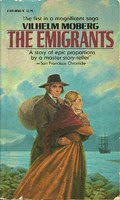 Ricardo Braithwaite is a bright, educated black man, but after his service in the RAF, he can't find work due to the color of his skin and is forced to take an appointment teaching unruly "children" in a working-class neighborhood. "To Sir with Love" is an autobiographical description of this man's first year in London's East End school Greenslade.
Ricardo Braithwaite is a bright, educated black man, but after his service in the RAF, he can't find work due to the color of his skin and is forced to take an appointment teaching unruly "children" in a working-class neighborhood. "To Sir with Love" is an autobiographical description of this man's first year in London's East End school Greenslade.
Braithwaite's primary message is that a black man is no different than a white man, that his color is only skin deep and does not determine his character or ability. "Sir" expects his students to present themselves well, and insists on clean clothes, polished shoes, proper manners, and good speech. Braithwaite teaches his "children" how to think and express themselves with control and confidence.
It's a quick read, but the language isn't simplified to allow for it. Braithwaite is intelligent, as is evidenced by his writing, and his thinking is good, but his emotions are clinical and he seems a little too self important. The female students, Pamela Dare, in particular, are infatuated with him. Characters comment on how good looking he is and neighborhood mothers give him special treatment. Unintentionally, Braithwaite presents himself as superior to his charges and their families. He has an "us versus them" attitude and the division isn't based on color or on heirarcy within the school system, but instead on social class.
The most interesting part of this novel, however, is Braithwaite's assessment of racism and how Americans are open and vocal about their differences whereas the British are closed, hiding behind the pretense that they treat all men equally, yet in truth they resist fair treatment and behave badly in the process.
To Sir, with Love is one of the first inner-city inspirational teacher novels. Blackboard Jungle, published in 1954, is credited with being the first. Braithwaite currently serves as a university writer in resident right here in Washington, D.C.
To find on amazon: To Sir with Love
To find on amazon: To Sir with Love






